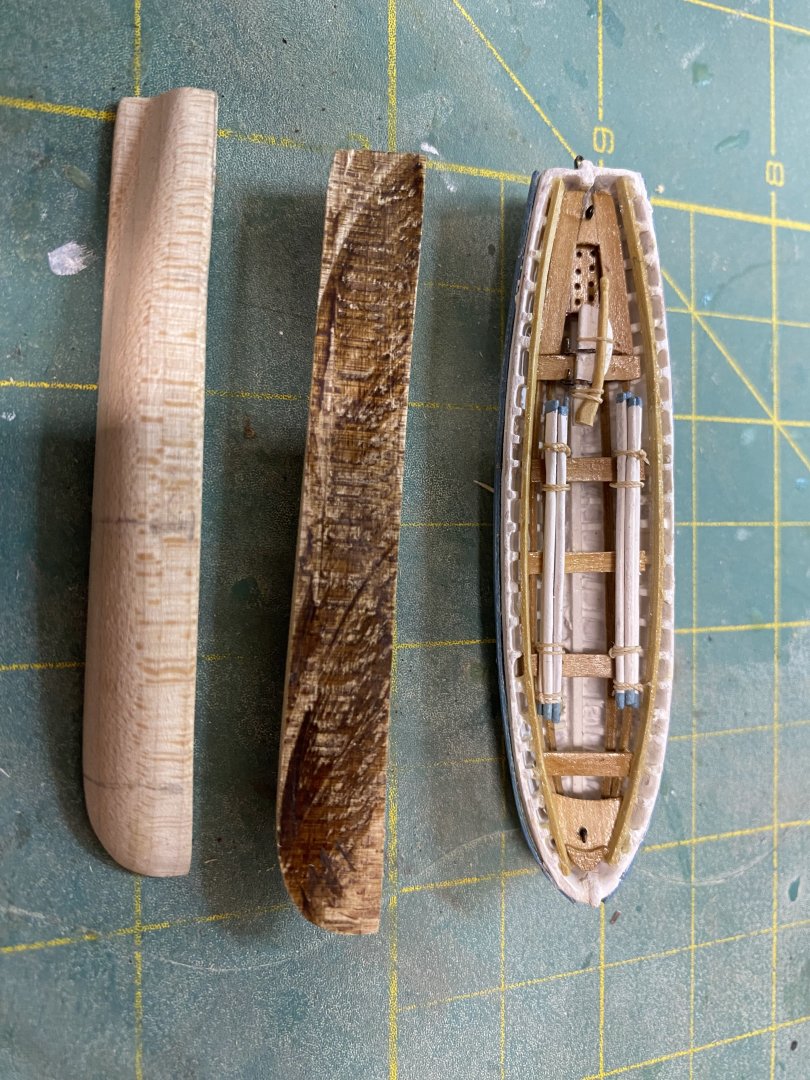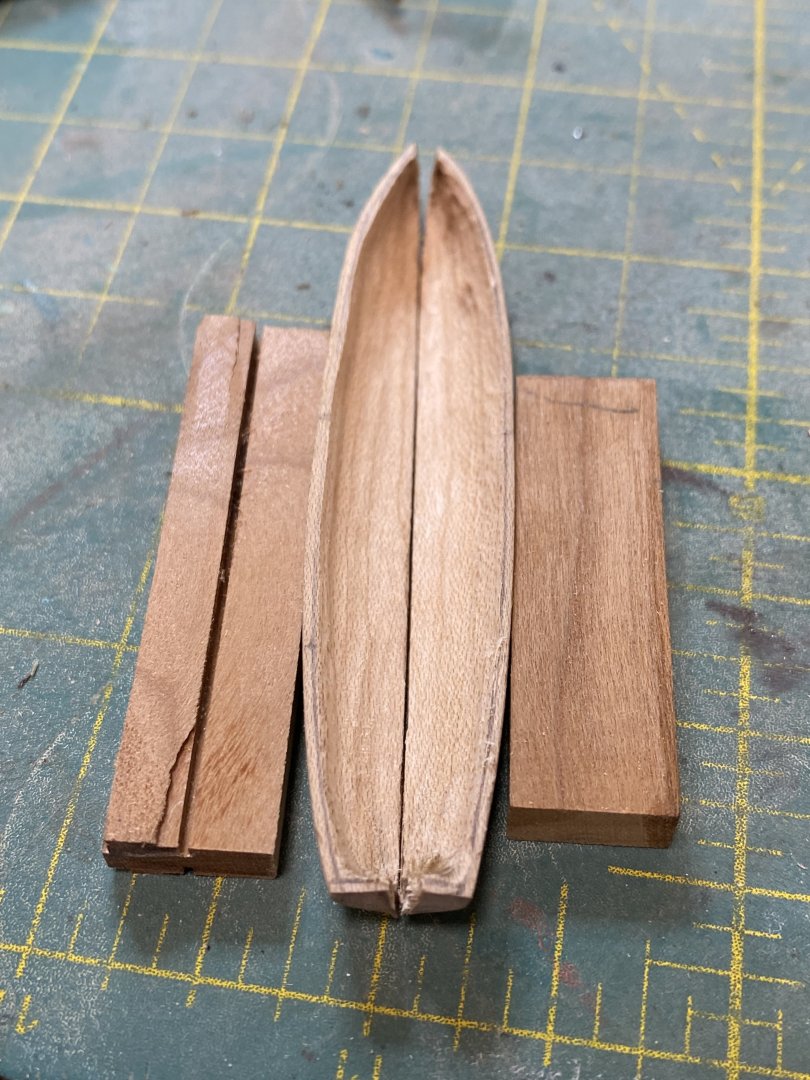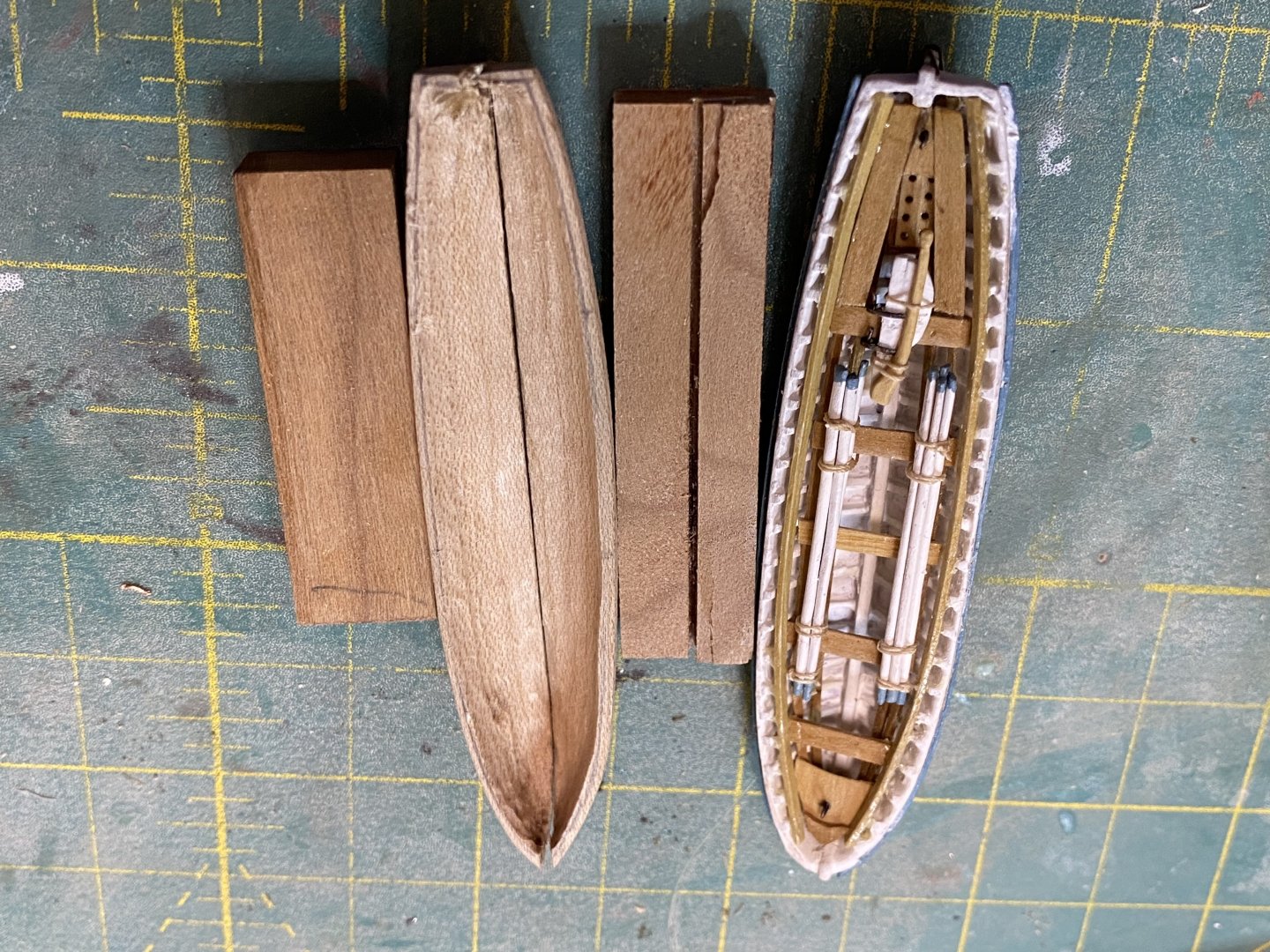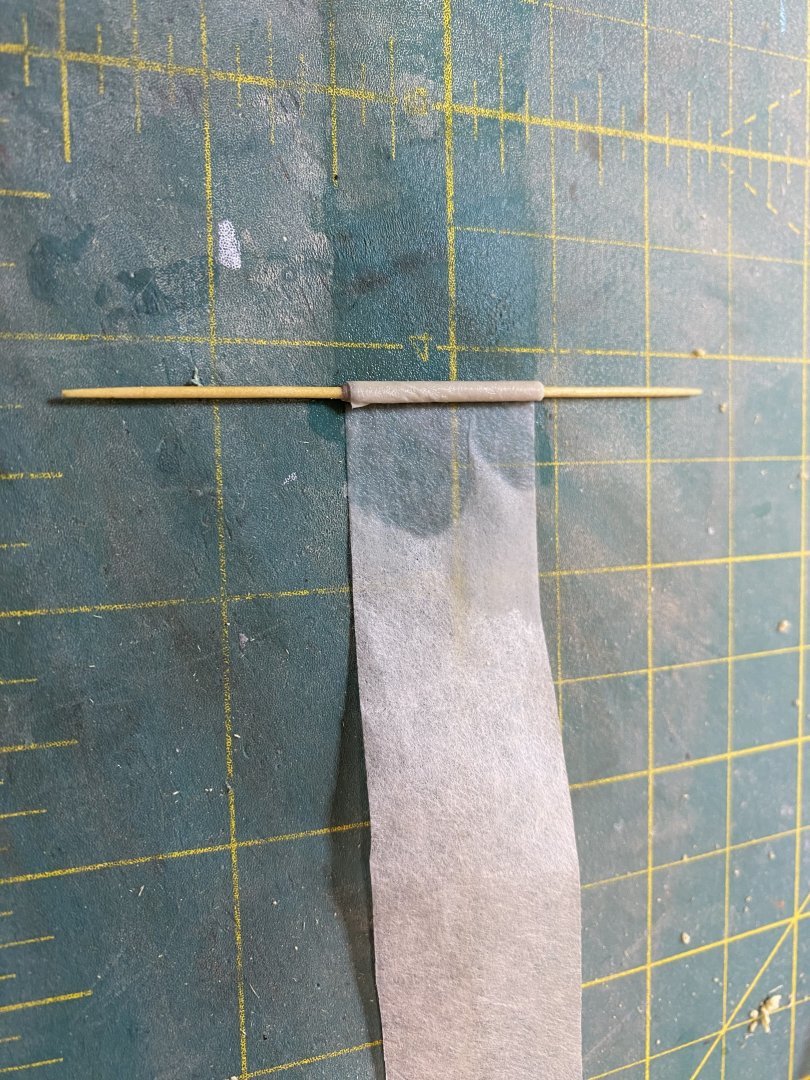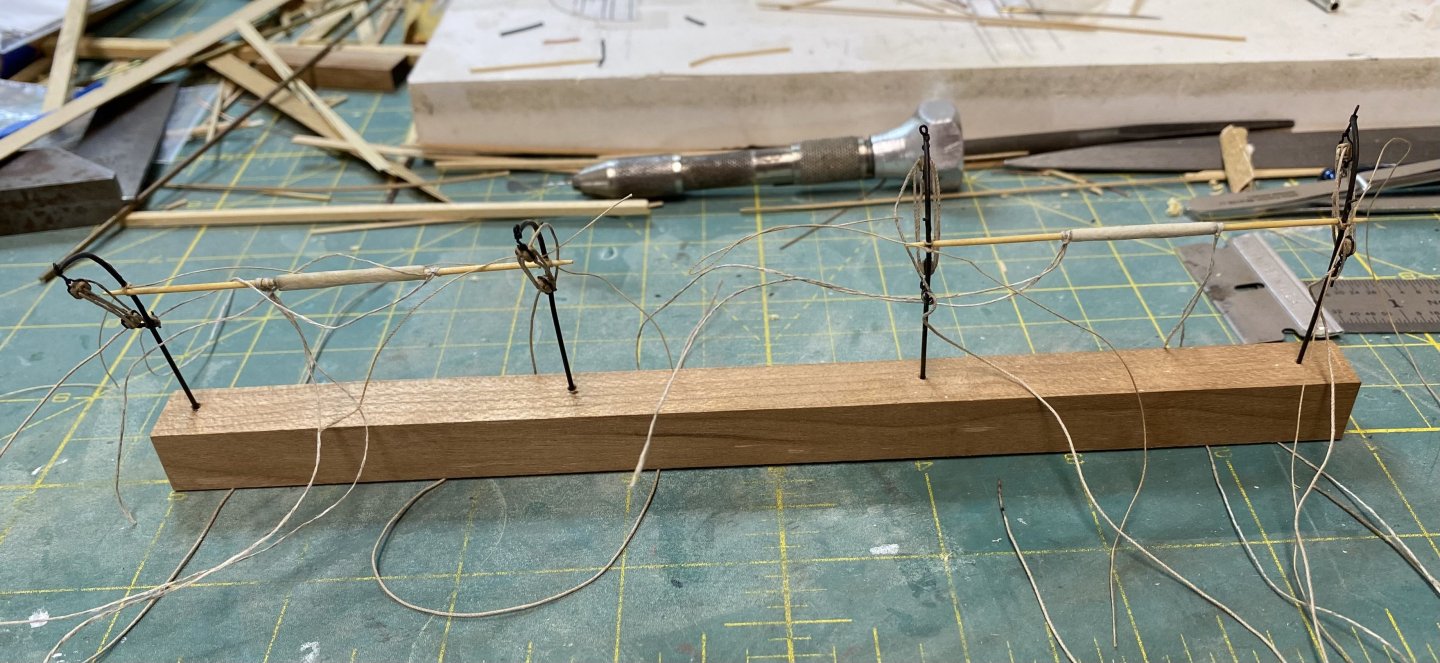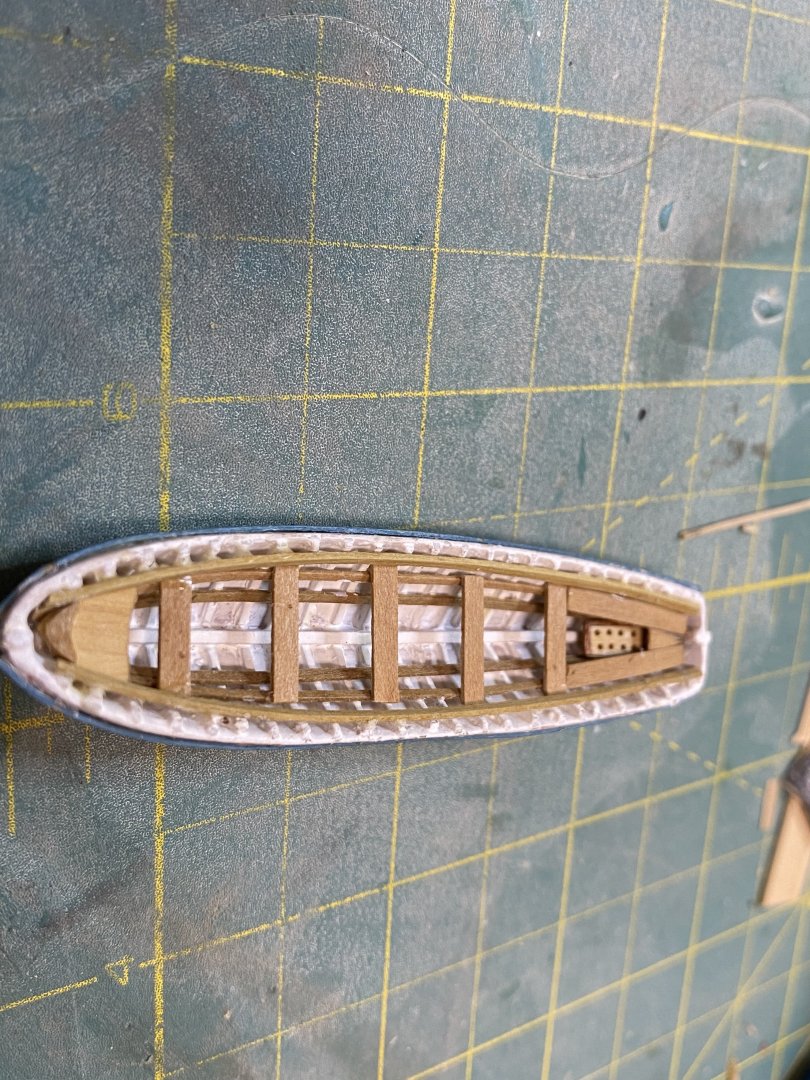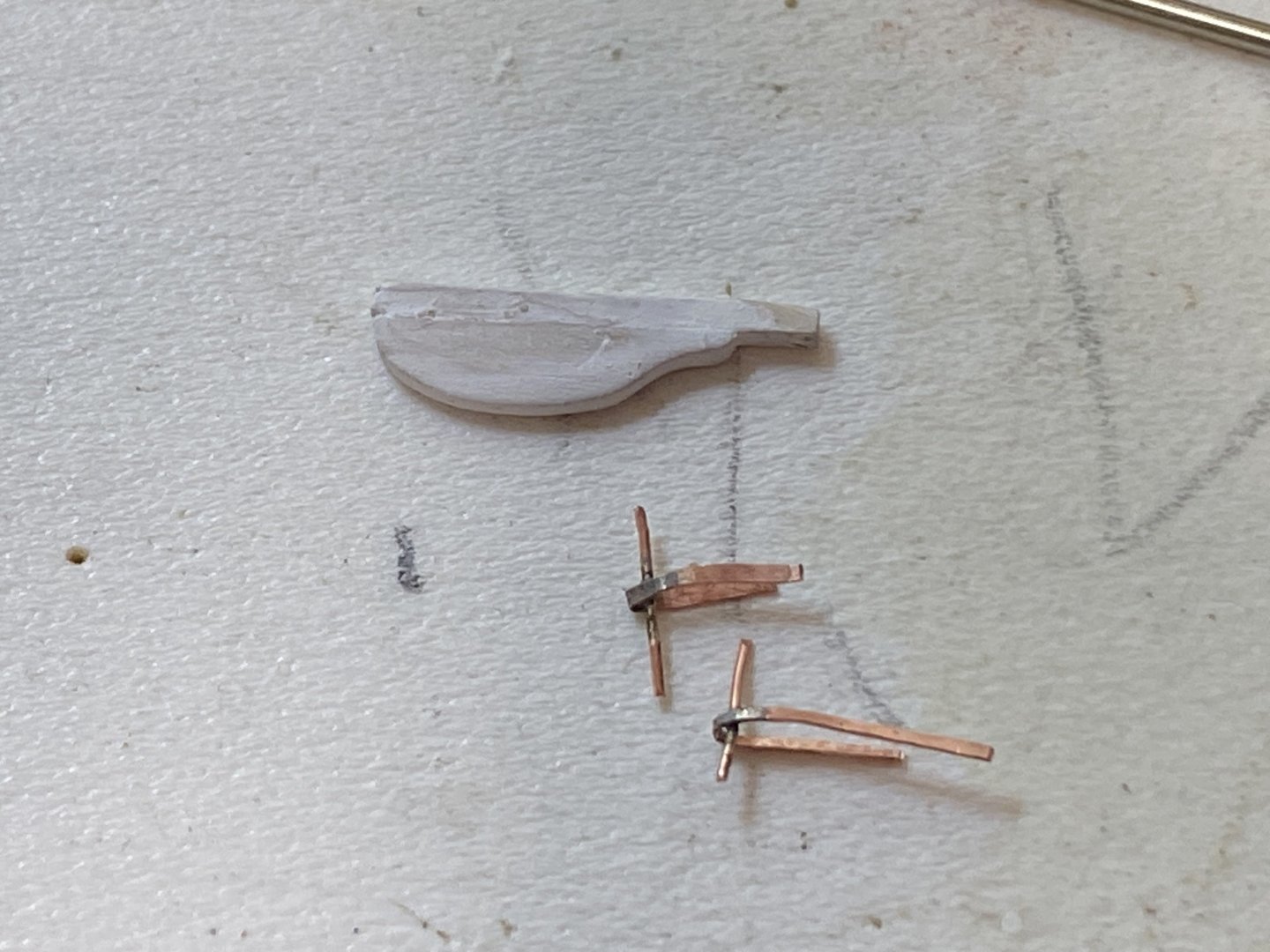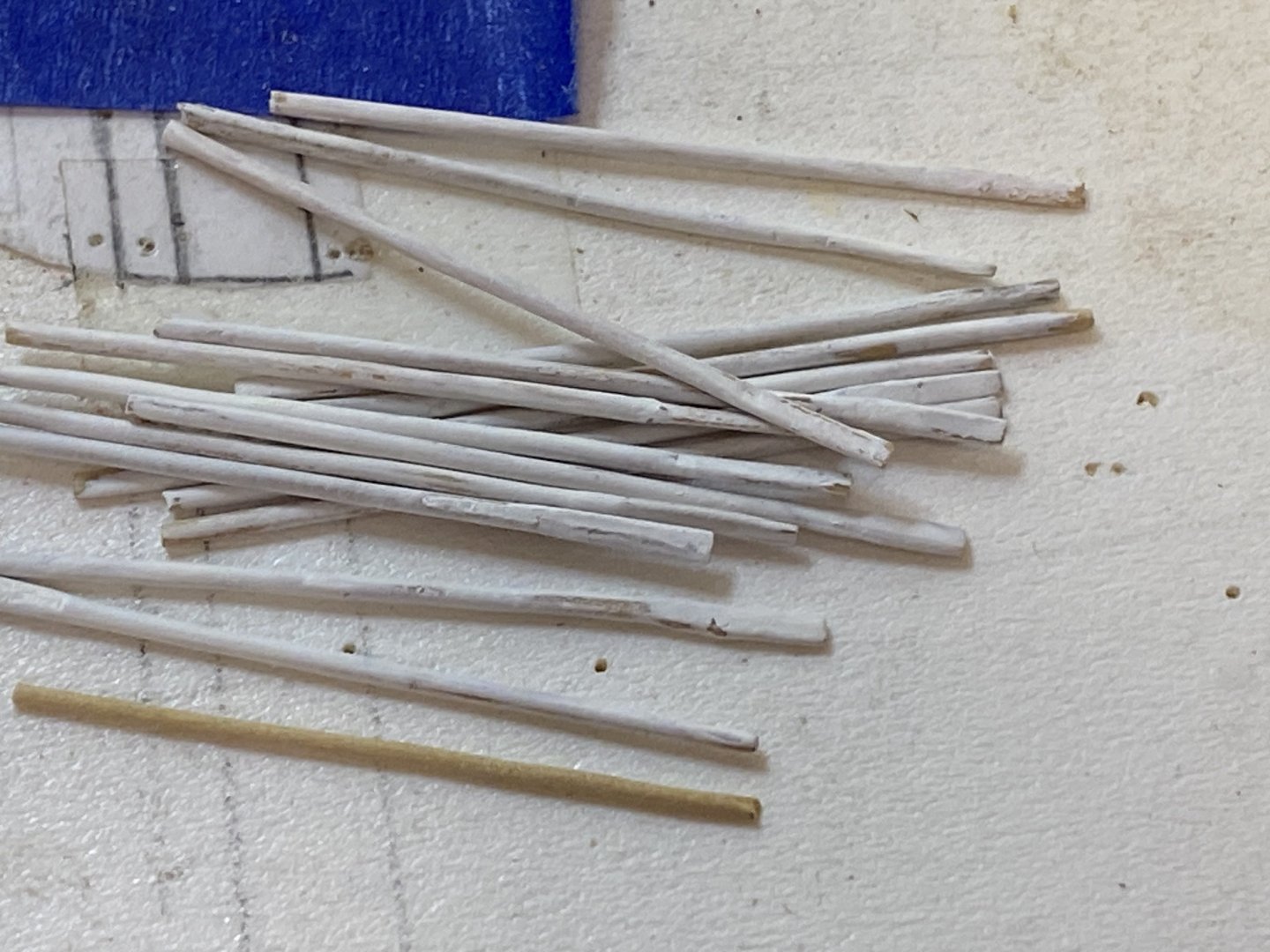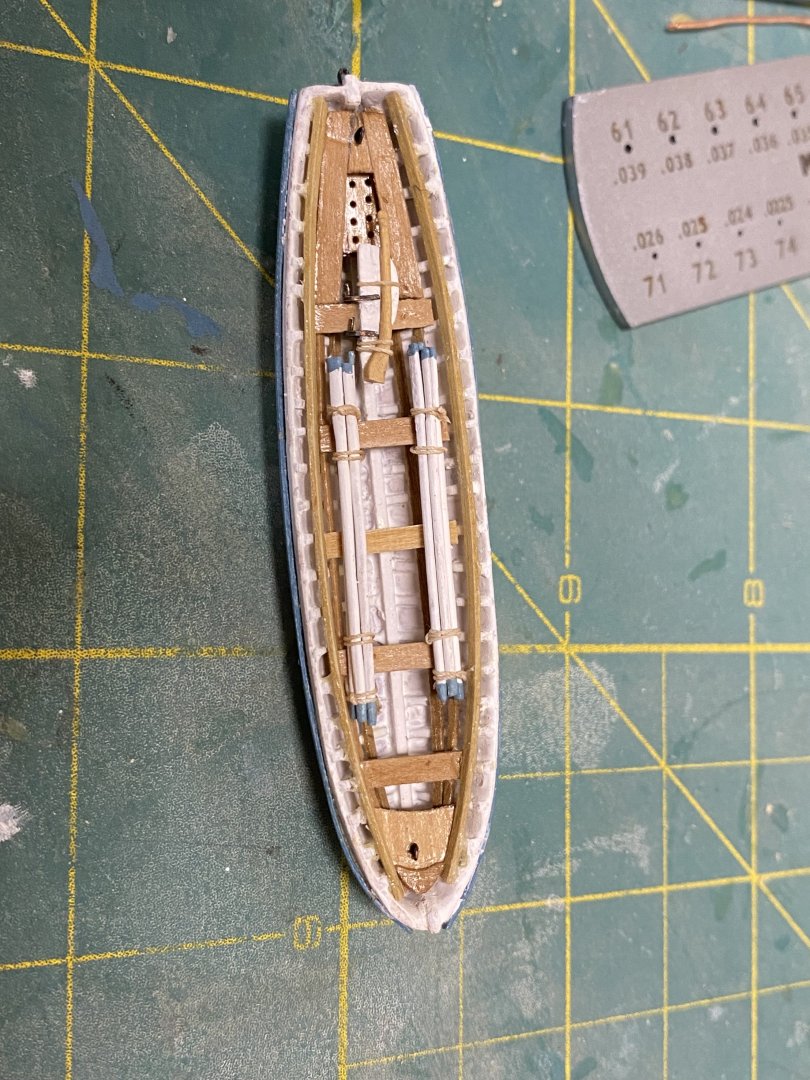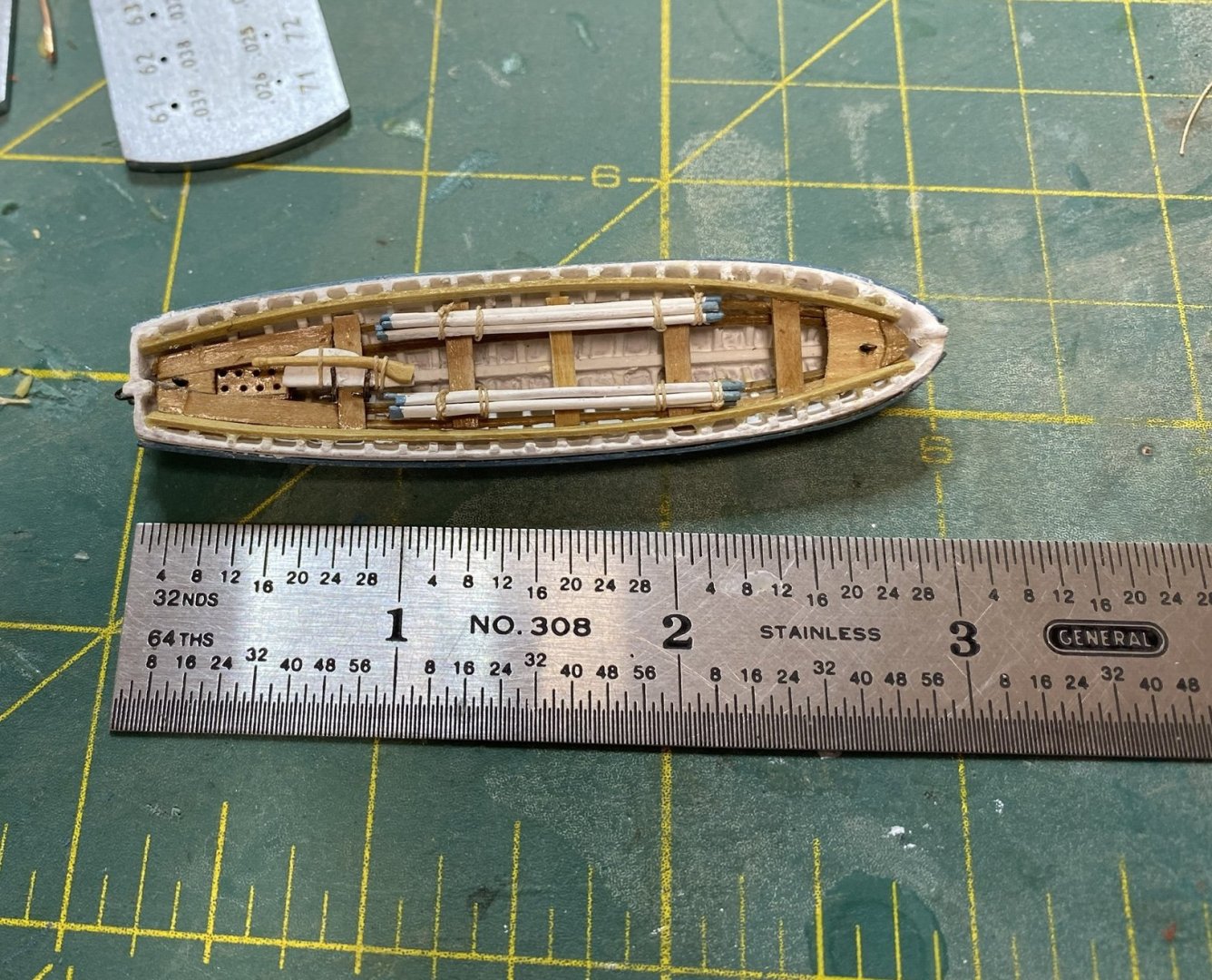
Rick310
NRG Member-
Posts
782 -
Joined
-
Last visited
Content Type
Profiles
Forums
Gallery
Events
Everything posted by Rick310
-
You are right Jared, the rigging is complex. I have to think several steps ahead so as not to paint myself in a corner! I just started rigging and it is a slow process! I’m also scared to death that I will snag something and break it! Keep up the good work, slow and steady! Rick
- 431 replies
-
- Flying Fish
- Model Shipways
-
(and 2 more)
Tagged with:
-
I found rigging the bowsprit a challenge. Hopefully the rest will be easier, although not sure about that! Rick
- 186 replies
-
- Flying Cloud
- Mamoli
-
(and 1 more)
Tagged with:
-
This is such a great build Keith!! You are doing a magnificent job!! Rick
- 732 replies
-
- Lula
- sternwheeler
-
(and 1 more)
Tagged with:
-
Thank you Keith , George and Rob for your input! Much appreciated! Keith, is the blackening solution you use called Birchwood Casey Blue? Rick
- 345 replies
-
- Flying Fish
- Model Shipways
-
(and 1 more)
Tagged with:
-
Keith, George, thanks for the tip. From now on, I’m going with wire. Rick
- 345 replies
-
- Flying Fish
- Model Shipways
-
(and 1 more)
Tagged with:
-
Keith, thank you so much for your input! I read your post and it never occurred to me to use annealed wire. Much stronger than copper and should be easier at my scale 1/96. Plus the advantage of using wire closer to the correct scale! Rick
- 345 replies
-
- Flying Fish
- Model Shipways
-
(and 1 more)
Tagged with:
-
Before starting the rigging, it occurred to me that I should check the plans and insure that all blocks and pre rigging were complete. This has been a long and occasionally frustrating process as I’ve had to constantly refer back to the rigging plans for the size and location of blocks , eyebolts and line. Even with frequent checks, I am constantly finding errors that need to be corrected. Because I finished the mizzen top first, I found myself using the same size blocks for the fore and main tops, which is wrong because those blocks are larger, except for the mizzen brace and bowline blocks on the main top which are smaller. Very easy to get confused, and I’ve had to correct more than a couple of mistakes. I’ve also started to add some of the running rigging lines, which will be difficult to access once the masts and shrouds are in place. I am using Syren blocks and rigging line which are really well made! The blocks are stropped with 26 ga. Copper wire. As I previously posted, the 28 ga copper wire breaks to easily and many of the blocks already stropped with the 28 ga wire have broken and had to be replaced with the 26 ga copper wire. The hardest blocks to strop are the 2 mm blocks and my causality rate is probably close to 50% between dropping them and crushing them. Because I decided to include the bowlines, I’ve spent a considerable amount of time deciding where the blocks should go on the main and fore masts. These locations are not given in the plans, or in any reference source I have available, except for the fore bowlines which run to the jib boom and back to the forecastle. These lines are easily seen on the model of the Flying Cloud. The runs of the other lines are obscured by the sails. I’m placing the bowline blocks where it seems logical to me. I also started the second quarter boat. This time I made a jig to cut the boat in half on the table saw. This was well worth the effort as it cut the boat into equal halves. I also hollowed out the insides and will glue the halves to the keel. Finished rigging the davits with their spars. Padding was made from silkspan. These have been set aside until the rigging is completed
- 345 replies
-
- Flying Fish
- Model Shipways
-
(and 1 more)
Tagged with:
-
Lynn, glad to hear that you decided to continue with your build. I too, reached a point in building the Flying Fish, where I was almost scared to continue as nothing was coming out as good as I had hoped for. I eventually decided to either finish the build or get rid of it, as it was only collecting dust. Since then, I have continued to learn and improve. All the things I was not satisfied with at the time, I don’t notice now! Be patient, have fun, learn when to remake a part or know when “good enough is good enough!”. Rick
-
Thanks George! Really appreciate your input! Rick
- 345 replies
-
- Flying Fish
- Model Shipways
-
(and 1 more)
Tagged with:
-
Thanks Jared, still have to make a second one which for me, always seems harder! Rick
- 345 replies
-
- Flying Fish
- Model Shipways
-
(and 1 more)
Tagged with:
-
Finished the first quarter boat. The grating was made as before with boxwood and cherry. Not at all happy with the result. The holes and spacing are much too large but opted not to remake it as it’s not very visible. Will do better next time. The rudder and tiller were carved out of boxwood and the oars were made per EdT. Small strips of boxwood were drawn through a draw plate from Byrnes model machines and it worked really well. This was the first time I was able to successfully use a draw plate. The first one I had from Micromark didn’t work at all with wood. I read somewhere that the Byrnes draw plate was made specifically for wood. The last 3 oars were made from AYC , which was much easier to draw and produced straighter oars. I chose a length of 10 feet (1 1/4 inches) for the oars. This looks about right. One end was then marked at 1/4 inches for the blade and squeezed with parallel pliers. This also worked well with no need to soften in hot water first. The blades were then soaked with cyano to stabilize the fibers, filed to shape and painted flat white. The handles will be painted blue-3/32 and the blades- 1/16, again copying EdT’s Young America. Hinges for the rudder were made from 28 ga copper wire hammered flat for the strap with a straight length of 28 ga wire, soldered for the pins. These were bent around the edge of a metal ruler that was the same thickness as the rudder and blackened. The spacing for the davits is 2 1/2 inches based on the spacing of the eyebolts, which is shorter than shown on the plans. This was governed by the quarter boat, where the eyebolts could be placed on the model. The aft davit will be between the first and second deadeyes on the mizzen channel, and the forward davit just aft of the freeing port. Hopefully this will work well and is a compromise between the plans and the paintings. I will make the other quarter boat at another time as I am anxious to get on with the rigging. Finally, the davit brackets were finished and mounted to the hull and the spars for the davits made, again using AYC, drawn through the draw plate, tapered and stained with Ipswich pine and satin wipe on poly. I’m going to attempt to make the padding from some very old silkspan.
- 345 replies
-
- Flying Fish
- Model Shipways
-
(and 1 more)
Tagged with:
About us
Modelshipworld - Advancing Ship Modeling through Research
SSL Secured
Your security is important for us so this Website is SSL-Secured
NRG Mailing Address
Nautical Research Guild
237 South Lincoln Street
Westmont IL, 60559-1917
Model Ship World ® and the MSW logo are Registered Trademarks, and belong to the Nautical Research Guild (United States Patent and Trademark Office: No. 6,929,264 & No. 6,929,274, registered Dec. 20, 2022)
Helpful Links
About the NRG
If you enjoy building ship models that are historically accurate as well as beautiful, then The Nautical Research Guild (NRG) is just right for you.
The Guild is a non-profit educational organization whose mission is to “Advance Ship Modeling Through Research”. We provide support to our members in their efforts to raise the quality of their model ships.
The Nautical Research Guild has published our world-renowned quarterly magazine, The Nautical Research Journal, since 1955. The pages of the Journal are full of articles by accomplished ship modelers who show you how they create those exquisite details on their models, and by maritime historians who show you the correct details to build. The Journal is available in both print and digital editions. Go to the NRG web site (www.thenrg.org) to download a complimentary digital copy of the Journal. The NRG also publishes plan sets, books and compilations of back issues of the Journal and the former Ships in Scale and Model Ship Builder magazines.



